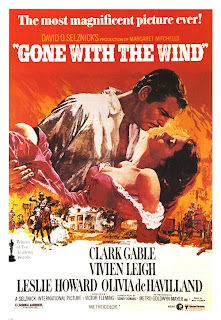A film like Gone with the Wind is a perfect example of this. Producer David O. Selznick came up with the idea to make a movie from Margaret Mitchell's best-selling novel and commissioned Sidney Howard to write the screenplay. He managed the casting search himself and after a two-year struggle got Vivien Leigh and Clark Gable, his first choices as the stars of the movie. During production, Selznick called all the shots: he fired the original cinematographer, replaced the director twice, and commissioned four additional writers to edit the original screenplay. Being on contract, the contribution of the writers and directors paled in comparison to the control Selznick had over the picture. He says this himself in a memo late in 1939:
"[Y]ou can say frankly that of the comparatively small amount of material in the picture which is not from the book, most is my own personally, and the only original lines of dialog which are not my own are a few from Sidney Howard and a few from Ben Hecht and a couple more from John Van Druten. Offhand I doubt that there are ten original words of [Oliver] Garrett's in the whole script. As to construction, this is about eighty per cent my own, and the rest divided between Jo Swerling and Sidney Howard, with Hecht having contributed materially to the construction of one sequence."
It's also useful to note that on the poster the title is preceded by "David O. Selznick's Production of..." and that Selznick's name is relatively prominent, smaller only than the names of the actors.
In modern Hollywood it's much more common for a writer to produce a screenplay and for a director to oversee the actual filming. Often the role of the producer will be to attract the attention of a writer to a particular director, and vice-versa, or to attain funding for the project. While the producer still has some input in the creation, they are more often in charge of the logistical aspects of production, largely leaving the creative aspect to the director.
Mel Brooks's first film The Producers is a good example of this system. Brooks wrote the script himself and pitched it to MGM to get it made. After getting funding, Brooks personally directed the film. The only significant creative contribution of the film's producer was to change the title. Brooks's original title, Springtime for Hitler, was considered too controversial and was changed as a condition of the movie being released. Brooks's personal style can be seen in this and all his subsequent films, despite being produced by several different people.



No comments:
Post a Comment